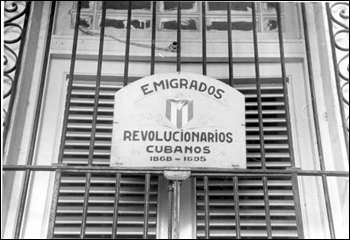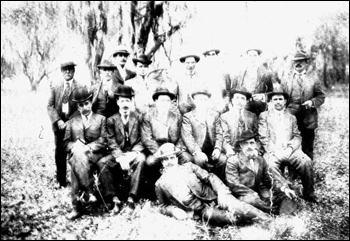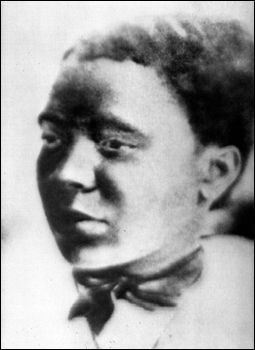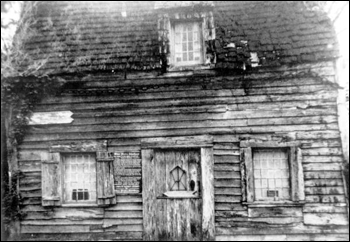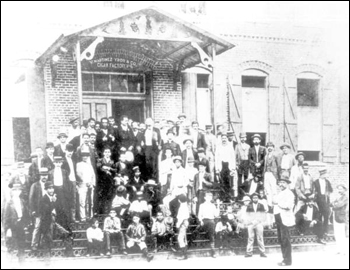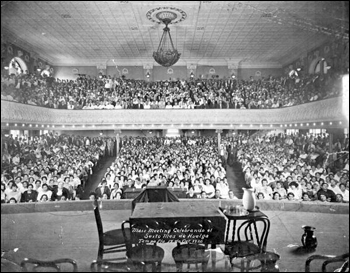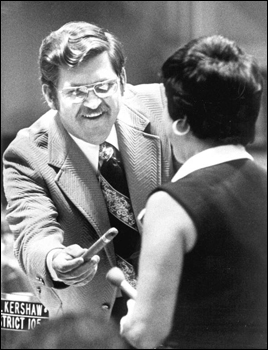Photo Exhibits
Photo exhibits spotlight various topics in Florida history, and are accompanied by brief text intended to place selected materials in historical context.
Florida Cigars
Artistry, Labor, and Politics in Florida's Oldest Industry
Sign at home of the Cuban Revolutionary Society: Key West, Florida (1938)
Image Number: RC02747
Picnic for cigar foreman at Sixmile Creek (ca. 1910)
Image Number: N043548
Paulina Pedroso (18--)
Image Number: N043603
Paulina Pedroso was born and died in Cuba. From the 1880s to 1910, she and her husband Ruperto worked at cigar making while organizing La Sociedad Libres on behalf of Cuban freedom. José Martí headquartered his activities in the United States in her home.
Segregation
In the 1890s, Jim Crow laws spread throughout the South, formalizing segregation of public facilities and businesses, and establishing restrictions on African-American political participation. Influenced by the larger southern trend towards more stringent racial segregation, divisions began to appear between Spanish-speaking white and black Floridians that had previously been less apparent.
Soon after the emergence of segregation, race relations among Florida's cigar workers became tense, particularly after the Spanish-American War, which had seen unified support among all of the state's Hispanic population. In the first decade of the 20th century, the separation of jobs between white and black workers became more commonplace, which certain specialized jobs becoming off-limits to black workers.
Jobs in the cigar factories were also sometimes segregated by gender, with some factories limiting the most skilled positions to men. Women were often relegated to traditionally female jobs such as "strippers," those removing the center stem from leaves, whereas men occupied other areas of cigar work such as selecting wrapper leaves. However, small factories called chinchals employed men and women at all skill levels in order to maximize the work of fewer employees and family members and women became more commonly employed in skilled positions at large factories such as rollers by the 1930s and in the increasingly mechanized industry, although still working for lower wages.
Rolling machines and less expensive products such as cigarettes became the more efficient alternative that spelled the end of the traditional cigar factories.
With Cuba's economy severely damaged by successive wars and the nation facing mounting unemployment, many Cubans in Key West and Tampa who had waited for decades for an opportunity to return to a liberated Cuba decided instead to establish more permanent roots in Florida.
The Paulina Pedroso home at the corner of 8th Avenue and 13th Street, Ybor City: Tampa, Florida (18--)
Image Number: RC10808
Paulina Pedroso was born and died in Cuba. From the 1880s to 1910, she and her husband Ruperto worked at cigar making while organizing La Sociedad Libres on behalf of Cuban freedom. José Martí headquartered his activities in the United States in her home.
José Martí on the iron steps of a cigar factory where he made a speech for Cuban independence (between 1890 and 1895)
Image Number: RC07469
José Martí is in the center of the photograph on the top step with his jacket open and his hands in his pockets. Photographed on the iron steps of the Vicente Martinez Ybor cigar factory where he made one of his most famous speeches to supporters of the Cuban revolutionary movement.
Mass meeting of cigar workers on strike: Tampa, Florida (1920)
Image Number: PR12441
Mass meeting celebrating the sixth month of the strike by cigar workers.
Cigar Industry at Its Height
Meanwhile, the cigar industry continued to grow and more and more immigrants came not just from Cuba, but from Italy, Spain, and throughout Eastern Europe and Latin America in search of work. At its height in the 1880s, there had been more than 100 factories in Key West. By 1910 there were 150 factories in the Tampa area employing more than 10,000 workers. Of the 50,000 residents of Tampa, 14,000 were Cuban, 7,500 were Spanish, and 1,500 were Italian.
The embrace of increasingly radical ideologies by Tampa workers between the turn of the century and 1940 kept the unions and their leadership at odds with the business and political elite in Tampa who were in general closely tied to the factory management. Labor-management relations were characterized by frequent strikes, walk-outs, lockouts, and incidents of mob violence and vigilantism.
Vigilante squads began cracking down on union leaders and political radicals with greater intensity after the series of strikes following the Spanish-American War. Company management colluded with landlords to evict union members and with banks to freeze assets. Police and vigilantes were notoriously harsh in their treatment of union members suspected of radical activity, with lynching, murders and beatings becoming almost commonplace in Tampa by the 1930s.
Florida house representatives Dick Clark and Elaine Gordon (1986)
Image Number: PT01890
Majority Representative Dick Clark, Democrat of Miami, hands a cigar to Representative Elaine Gordon, Democrat of Miami, after she helped pass an anti-smoking bill in the Florida House of Representatives.

 Listen: The Folk Program
Listen: The Folk Program